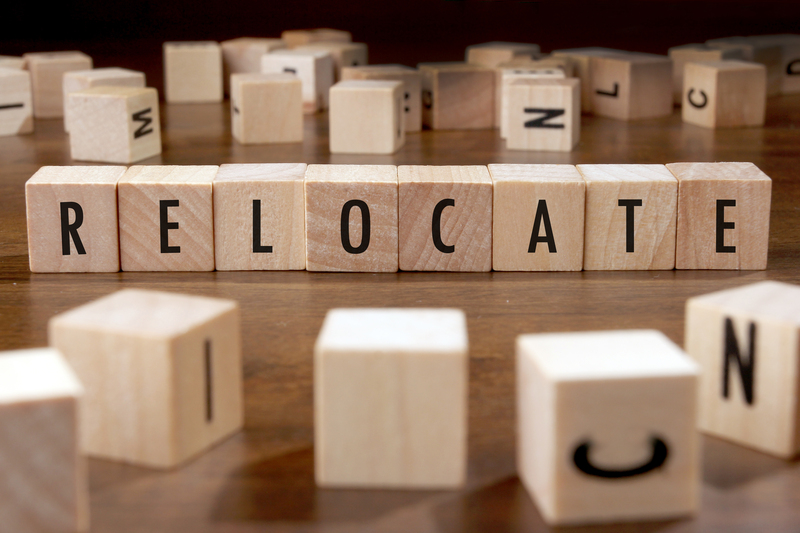A Step-by-Step Guide to Relocating Your Bed and Mattress Efficiently
Whether you're moving across town or to a new state, relocating your bed and mattress efficiently is crucial for a smooth transition. Your sleep setup is a vital component of daily comfort, so taking proper steps during the move can help maintain the integrity of your bed and ensure you rest well in your new home. This comprehensive, SEO-optimized guide will walk you through everything you need to know to move your bed and mattress safely and efficiently.
Why Properly Moving a Bed Frame and Mattress Matters
Your bed set is more than just furniture; it's essential for your wellbeing. Improperly relocating your mattress or bed frame can result in:
- Physical damage to the mattress, box spring, or bed frame
- Exposure to dirt, dust, and allergens
- Potential voiding of the mattress warranty
- Unnecessary strain or injury while moving heavy items
- Lost time or higher moving costs due to inefficient packing
This step-by-step guide addresses all these concerns and helps protect your investment during the bed and mattress relocation process.

Step 1: Gather the Right Supplies for Moving a Bed and Mattress
Before you start, collect the necessary moving supplies. Having the right materials makes the process smoother and prevents damage:
- Mattress bags or covers - Waterproof and tear-resistant
- Furniture blankets or moving pads
- Dismantling tools - Screwdrivers, pliers, Allen wrenches
- Packing tape and plastic wrap
- Marker pens/labels for organization
- Bubble wrap for small, delicate parts
- Zip-lock bags for hardware screws and bolts
- Hand truck or dolly to move heavy pieces
- Gloves to protect your hands
Pro Tip: If you have a specialty bed, check the manufacturer's recommendations for moving instructions.
Additional Tools for Queen, King, or Adjustable Beds
For larger or motorized beds, enlist extra help and ensure you have the necessary electrical knowledge for safe disassembly and reconnection.
Step 2: Strip and Prepare the Bed
Start by removing all the bedding:
- Take off sheets, blankets, pillows, and mattress toppers
- Wash and pack linens separately in clearly labeled boxes
- Secure pillows and fragile bedding with plastic bags
- Let the mattress air out for several hours before covering it
Completely stripping the bed will help you with the next steps and let you inspect the mattress for any hidden damage.
Step 3: Disassemble the Bed Frame Carefully
To make your bed relocation safe and easy, take apart the bed frame. Here's how:
- Take pictures of the bed frame before disassembly for easy reference during reassembly
- Remove the mattress and box spring, setting them aside
- Disassemble the headboard, footboard, and side rails using the correct tools
- Keep bolts, screws, and small hardware together in labeled zip-lock bags
- Wrap all wooden or metal components in moving blankets
- Don't rush: Take extra care with antique or wooden beds to avoid bent or damaged parts
Advanced Tip: For beds with built-in storage or attached lighting, check the manufacturer instructions or consult a moving professional for safe disassembly.
Step 4: Pack and Protect Your Mattress and Bed Parts
Protecting your mattress and bed parts ensures they arrive in perfect condition:
- Mattress: Slide it carefully into a mattress bag; seal the edges with packing tape.
- Box spring: Wrap similarly with a bag and reinforce corners.
- Bed frame pieces: Wrap each part in furniture blankets or bubble wrap and secure with tape.
- Headboard/footboard: Double-wrap if they have delicate or decorative edges.
- Label everything clearly so you can find each piece during reassembly.
Never stack heavy items on top of your mattress, which can permanently deform the inner structure.
Step 5: Plan the Best Route for Moving Bed and Mattress
Before you move the bed and mattress, consider the path:
- Measure all doorways, hallways, and stairwells in both your old and new homes.
- Clear obstacles along the route.
- Plan for elevator access if you're in an apartment building.
- Consider the weather forecast for moving day - wet or humid conditions can damage your mattress.
Inform your moving team about heavy or awkward items so they can help you with proper lifting techniques.
Special Considerations for Tight Spaces
If you're facing narrow doorways or winding staircases, check if the mattress can be flexed slightly without damaging its structure. Adjustable base beds or platform frames may require special handling or temporary removal of doors from hinges.
Step 6: Safely Move Your Mattress and Bed Frame
Lifting and transporting mattresses and bed frames requires technique and teamwork:
- Use at least two people to lift queen or king sizes.
- Keep the mattress upright and vertical (not folded) whenever possible.
- Use a dolly or hand truck for heavier sections.
- Secure everything inside the moving truck with straps to prevent shifting.
- Position the mattress flat against a wall or on top of other soft items (such as a couch), never on its side for too long, as this may cause uneven wear.
For DIY moves, ensure your vehicle is large enough. Most mattresses won't fit in a regular car and might need a pickup, van, or box truck. Never strap a mattress to the roof of a car: it's unsafe and may damage the mattress or put others on the road at risk.
Tips for Professional Movers
If you're hiring movers, ensure they are experienced in furniture and mattress moving. Many will provide mattress covers and bed disassembly as part of their service. Clarify in advance if additional fees apply.
Step 7: Setting Up Your Bed and Mattress at the New Place
Once everything arrives safely, it's time to reassemble your bed and set up your mattress:
- Unpack and inspect all components for damage
- Follow the photos you took during disassembly to guide reconstruction
- Tighten bolts and screws securely but avoid over-torquing
- Let the mattress air out before covering it with bedding
- Place the bed frame on a level surface to avoid creaks or instability
Reorganize your bedding and linens for a fresh start in your new bedroom.
Troubleshooting Issues After the Move
If you notice uneven support, squeaks, or missing hardware, check your zip-lock bags and ensure everything matches up with your photos or manufacturer's guide. If damage occurred during the move, consult your moving insurance policy or contact the moving company for assistance.
How to Move a Mattress Without Damaging It
Mattresses are an investment--here are some expert tips to keep yours in optimal shape:
- Always use a waterproof mattress bag for protection against dirt, pests, and moisture
- Avoid folding or bending memory foam and hybrid mattresses
- Minimize time spent with the mattress standing on its side
- Keep away from sharp objects and avoid placing anything heavy on top
- Keep out of direct sunlight for prolonged periods, as UV rays can degrade some materials
Moving a memory foam or hybrid mattress? These can be heavy and floppy. Make use of straps or lifting slings, and always have at least two people to avoid injury or damage.
Eco-Friendly Mattress and Bed Moving Tips
If you're environmentally conscious, you can also relocate your bed and mattress sustainably:
- Use reusable moving blankets and mattress bags
- Recycle packing materials and boxes after the move
- Donate unwanted bed frames or bedding to local charities
- Rent a fuel-efficient moving vehicle
Pro tip: If your old mattress is due for replacement, research recycling programs in your area before moving it. Some states even have dedicated mattress recycling facilities.

Frequently Asked Questions About Moving Beds and Mattresses
Should I Move My Mattress Or Buy a New One?
If your mattress is over 8-10 years old, heavily worn, or no longer supportive, it might be a good time to invest in a new one. However, most modern mattresses are designed to last through multiple moves if cared for correctly.
Can Movers Disassemble and Reassemble My Bed?
Yes, most professional movers offer these services, especially for larger beds. Always clarify your expectations and ask about extra charges.
Is It Safe to Transport a Mattress on Its Side?
Short periods are fine, but avoid leaving a mattress on its side for long stretches to prevent internal shifting or sagging. Transport memory foam mattresses flat whenever possible.
How Do I Clean My Mattress Before or After a Move?
- Vacuum thoroughly to remove dust and debris
- Spot-clean stains with mild soap and water
- Ensure the mattress is completely dry before bagging up
Final Thoughts on Relocating Your Bed and Mattress Efficiently
Efficiently relocating your bed and mattress doesn't just preserve your investment--it also ensures your first night in your new place is restful and stress-free. Taking the right steps--from proper preparation and careful movement to expert reassembly--will help you start the next chapter of your life with comfort and peace of mind.
For more information on moving tips, follow our blog or contact professional movers in your area specializing in safe mattress and bed relocation services.
Ready for a smooth move? Use this step-by-step guide to streamline your next bed and mattress move and make your transition as easy as possible.